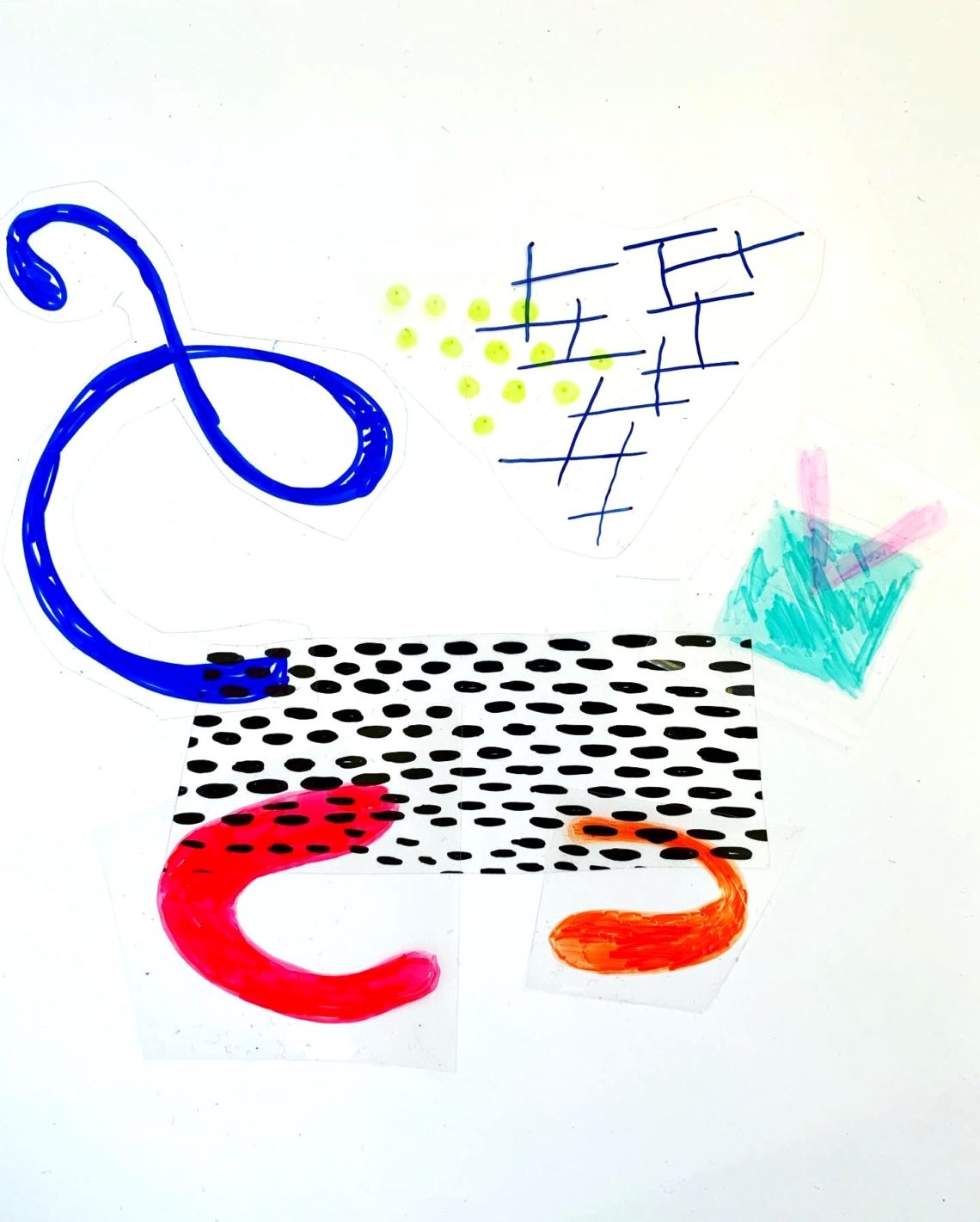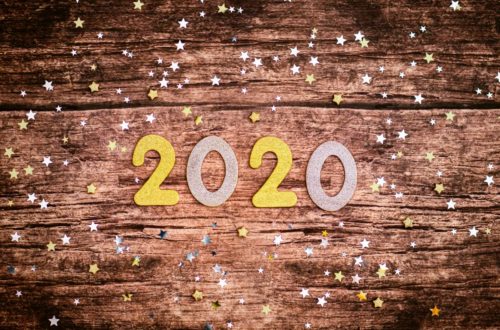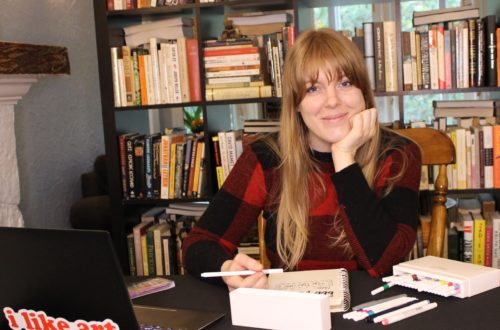As we move into a culture of social distancing for the next few months, demos and projects like this need to be adjusted. This project is best done with a family or household unit, as it involves sharing supplies. Make sure to have participants wash their hands thoroughly beforehand, have hand sanitizer and tissues for any coughs or sneezes, or host this activity outside. This is a really fun project that will have people laughing, focused on the task and hand and hopefully de-stressing.
Welcome back to Ruff Draft Demos, where I create a brand new demo, try it out and document the process so you and your staff can try it out, too! My personal favorite part of our new Customer Engagement Calendar is the opportunity to celebrate artists on their birthdays. In this Ruff Draft Demo I’ve created a demo that gives people an opportunity to explore a particular artist’s style: a class that focuses on gestural drawing and physical movement in honor of Joan Miró’s birthday on April 20th! This workshop was developed for children, but after play-testing it in my artist group I can tell you that it is quite fun for adults too.
Figure, Dogs, Birds 1946 and Untitled. 1934
This demo focuses on the master, Joan Miró. Born April 20th, 1893 in Barcelona, Miró had the good fortune of meeting an art dealer early in his career. When he moved to Paris in his 20’s, he began to associate with members of the Dada movement before settling into a Surrealist group where he would thrive for the rest of his creative life. His career encompases many mediums including painting, collage, lithography, sculpture, ceramics and printmaking.
So how do we teach kids about Joan Miro and how important he is to the history of the art world? The simplest way to carry on Miro’s legacy and celebrate his contributions to the art world: get kiddos’ hands on materials and make something fun—which is where this demo comes in.
Materials
- Permanent markers in various colors, one per person. The Art Alternatives Permanent Markers are low-odor, which is nice for this project. It doesn’t matter if multiple people have the same color, or if you use all black. I just happened to have multicolor packs on hand!
- Transparent paper, one sheet per person. I used Grafix Acetate, the biodegradable kind, in .003 thickness.
- Sturdy white paper, one sheet per person.
- Scissors
Step One: Let’s Get Physical
The first portion of this workshop takes place standing in a circle.
– First, get the group to focus with a simple theater game. One by one, each person in the circle will say their name and make a gestural movement with their body at the same time. After one person makes their movement and says their name, everyone in the circle will repeat that name and action. Go around the circle as fast as possible, this keeps the pressure off of those who may be nervous about this step while keeping energy and momentum high.
– Go around the circle again. This time rather than saying names, make a noise that corresponds with your movement (e.g. quickly point your finger and say “boop!”, squat and make a big foghorn noise, or spin around going “whee!”).
– Pick someone in the circle who seemed comfortable with the activity so far and ask them to give another example of a sound and movement. Repeat their sound and movement and ask everyone in the circle to do it again. Repeat a few times in a row: make the movement and noise bigger and louder by instructing the group “bigger,” “bigger,” “louder!”
– Once you’ve got that, demonstrate a gestural drawing. There is no wrong answer here, so make something accessible, like a swirl or an arc to demonstrate how simple it can be. Translate that movement a different way with a different type of shape or way of drawing (curved lines vs. straight or making a pattern rather than a shape).
Step Two: Small Groups
My artist group testing out this demo. In this group we have two dancers, a board game designer, three musicians, four writers, one opera singer and a burlesque performer.
Break into small groups, ideally five to eight people per group. Each participant gets one sheet of acetate with tissue backing to help to see their drawings and one marker. You will end up with one shape per person in each group. Five people = five shapes.
One at a time in the small groups one person will create a sound and movement, everyone in the group copy-cats physically, then draws their gestural line on their acetate. Encourage participants to make thick lines, but not make shapes too big because filling them in becomes harder (and takes longer). Remind them that they are not drawing the same thing as anyone else in the group, and there are no wrong answers.
After each shape, pass your marker to the left so every participant ends up with multiple colors on their page. Once everyone has given their gesture and the group has drawn their shapes, cut the shapes out.
Note: Cutting straight/clean edges does not matter as the “paper” is clear. This is the step where you’ll discover the perfectionists. Encourage them to “let it go” and remind them that they can trim the paper later when they get home if they so choose.
A group of shapes made from, top to bottom left to right, someone holding an umbrella, someone making the Y from YMCA, Someone forming a ball on the ground, a wacky dance, two people making arches, a spin and tiptoeing.
Distribute the sturdy white paper. This will be the background and base for the collage, and also creates restrictions on how big the collages can go (shapes must fit on the page).
Two Figures and a Dragonfly, 1936; Seated Woman 1939
Step Three: Come Together
Come back to the large circle. Once you’re back in the large group, have everyone examine their shapes. Show a few examples of Joan Miro’s work to encourage abstract thinking and explain the next steps. You will give the participants a series of prompts with a time limit to arrange the pieces. In between each prompt, everyone will stand up and walk around the circle in unison to view the other “artworks” in a “Gallery Crawl”. Here are the prompts:

Cat (1 minute)
Gallery Crawl Question:
“What similarities and differences did we see in the cats?”
City Park (30 seconds)

Gallery Crawl Question:
“What park do you want to play in most? “

Flower (30 seconds)
Instead of a Gallery Walk, everyone will pass their flowers gently two people to the right. We’ll pass everything back by the end, so no one needs to worry about losing their pieces.
Once you have your new page of pieces, take a few moments to deconstruct the flower and play with the shapes. Give a few more prompts that are relevant to the age group participating, or to your community. Take the time to explore any new prompts, or pass the papers one person to the left before returning them to their proper owners.
And take pictures if you can! You’ll get some fun ones… for instance, for my play-test group, I had them create a scene depicting “Friends grabbing a drink”
Finish full circle: for the final prompt, revive the first prompt of Cat! When you pass back the pieces to the respective first owners they will see how someone else saw a cat out of their shapes. It’s a good lesson on how many pictures can come alive with shapes and feelings and colors without having to be perfect.







